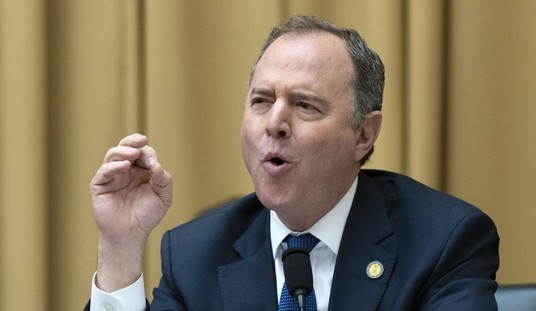Certainly as a director, Lou Lumenick writes in the New York Post:
Robert Wise, the editor of “Kane” and “Ambersons,” says in an archival interview in “Magician” that RKO fruitlessly pleaded with Welles to come back and make changes after a disastrous test screening of “Ambersons.”
“Welles might have been spoiled by the total control he had in both radio and theater,” says the documentary’s director, Chuck Workman. “He went to Hollywood at a time where directors were not necessarily the final arbiter of their films, and what he wanted was not in sync with what the money men wanted.”
While Welles was still in demand in Hollywood as an actor for films like “Jane Eyre,” no one trusted him to direct another film until the independently produced thriller “The Stranger” (1946) — Welles’ one and only box-office hit as a filmmaker.
Welles managed to blow whatever goodwill he had in Tinseltown after Columbia Pictures’ Harry Cohn took a chance on him to direct “The Lady From Shanghai” the following year.
Not only was this beautifully filmed (but narratively inscrutable) noir the first flop starring the studio’s top star, Rita Hayworth — but Welles perversely turned Hollywood’s most famous redhead (also his ex) into a blonde for the role, further enraging Cohn.
Except for a Poverty Row production of “Macbeth” (that Republic Pictures had to redub because Welles insisted on thick Scottish accents), Welles didn’t work again in Hollywood a decade.
That take certainly jibes with earlier Welles biographer, the late Charles Higham. In the conclusion of his 1985 tome on Welles, published just weeks before its subject’s death at age 70, the veteran biographer offered a simple and concise summation of why Welles’ services as a director went unwanted in Hollywood after RKO rescinded his license to kill in the early 1940. In an era before VCRs, DVDs, 500-channel cable and satellite TV and Netflix, there was no ancillary market for movies — they had to make their money at the box office, and a director who flopped as spectacularly as Welles was not a welcome man. And Welles’ films, visually stunning as they were at their best, simply didn’t make money. Hitchcock, John Ford, Michael Curtiz and Frank Capra were bankable directors; Welles was not. (Apologies for any errors in the following passage introduced while transcribing it):
It is axiom in the commercial cinema that the central figure of any work must be a human being with whom the mass audience can identify. He or she has to be likable, attractive, desirable, even when capable of villainy; he or she must speak the language of the people. Scriptwriters of proven commercial worth have deliberately tailored their scripts to the specific needs of stars so as not to extend their range too far, and the stars themselves more often than not make further alterations to suit their personalities. Yet so relentlessly has Welles worked against the commercial grain that he has even dared to make the central figures of his films unsympathetic.
In Citizen Kane, Welles created a selfish heartless tycoon who is destroyed spiritually by his own greed and ambition. Americans could have comfortably accepted a rogue or a pirate of this sort, but someone who was haunted by agonizing visions of lost innocence alienated and confused the mass audience for decades. In The Magnificent Ambersons, Welles portrayed an impudent, bad-tempered puppy of a man, George Minafer, who disrupted the life of a small town; this charmless creature proved impossible to identify with in an age of heroes of the caliber of Tyrone Power and Errol Flynn. The other protagonist of the story, Aunt Fanny, was the sort of figure usually made fun of in American films: the tortured virgin spinster who hopelessly sets her cap for a man she cannot have. Contemporary audiences laughed at Aunt Fanny, whose misery failed to touch a chord in the American heart.
Citizen Kane lost well over $100,000. The Magnificent Ambersons lost more than half a million. Following his failure to finish It’s All True, Welles attempted a comeback with The Stranger, a movie in which the protagonist was a Nazi war criminal hiding in a small American town. Again it was impossible for the audience to identify with such a person; the war was only just over, and there were few families that had not been affected by it. The Lady From Shanghai had as its hero a liberal sailor who had supported the loyalist cause in the Spanish Civil War — and many Americans knew that people like that were Communist sympathizers. The making of Rita Hayworth, reigning sex goddess of the American screen, into a murderess further alienated the public.
Shakespeare has never been box office in America, so Welles’s Shakespearean trilogy sank without a trace. Ironically, while the films he directed were failing, Welles himself was highly bankable as an actor and public personality, much as he is today. In Europe, Welles’s discipline disintegrated, and he lost control of his career. As his waistline grew, his career shriveled; it was almost as though eating and drinking were substitutes for creativity.
Sadly, Welles could have been transformed himself into a sort of father figure to the easy riders and raging bulls of the 1970s New Hollywood era, but he was far too dissipated by that stage to serve as a workaday mainstream director. Or as George Orwell once wrote, “A man may take to drink because he feels himself a failure, but then fail all the more completely because he drinks.” Lumenick notes that of Welles’ six abandoned ’70s-era films, The Other Side of the Wind, which starred John Huston, another larger-than-life director-actor-raconteur, as Welles’ onscreen stand-in is being readied for Cannes next year in honor of the centennial of Welles’ birth. Having seen clips of it, I’m not sure if anyone should get their hopes up that this will be Welles’ long-lost masterpiece, but I’d love to be proven wrong.










Join the conversation as a VIP Member